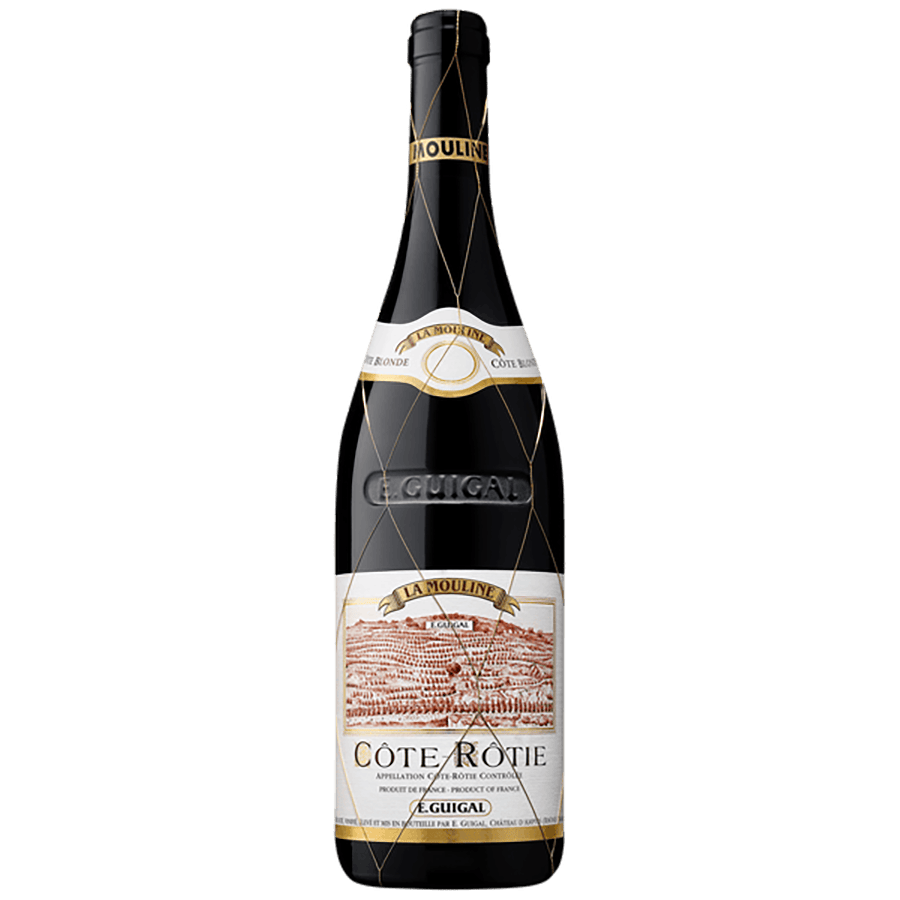Syrah - Viognier Description
The Syrah-Viognier wine represents a unique enigma in the world of viticulture, combining the robust, deep flavors of a red wine grape with the delicate, floral notes of a white wine grape. This blend, which marries the bold Syrah (or Shiraz) with the aromatic Viognier, has transcended its origins in France’s northern Rhone Valley to gain international acclaim. The partnership is unusual yet highly successful, demonstrating how two seemingly disparate elements can come together to create something extraordinary.
Origins and Growth Regions
The traditional cradle of the Syrah-Viognier blend is the northern Rhone Valley, particularly in the appellation of Cote Rotie, which translates to “roasted slope.” This area is renowned for its steep, sun-exposed vineyards, which benefit from the optimal ripening conditions provided by the region’s climate. The Rhone Valley’s combination of warm days and cool nights, along with its distinctive granite and schist soil compositions, creates an ideal environment for Syrah and Viognier vines to thrive. Viognier, often making up no more than 15 percent of the blend, is pivotal in enhancing the wine’s aroma and color.
From its traditional roots, the blend has ventured into new territories, adapting to a variety of climates and soils with remarkable success. In Australia, the Shiraz-Viognier blend has found a second home, particularly in regions like the Barossa Valley, McLaren Vale, and the Yarra Valley. Australian vineyards, with their warm climate and diverse soil types, allow for the production of exceptionally ripe Viognier grapes, which introduce lush apricot and peach nuances to the spicy and robust Shiraz.
California’s Central Coast, notably the Santa Ynez and Santa Maria valleys, represents the blend’s American frontier. Here, the blend benefits from the maritime influence, which moderates the climate and ensures a balanced ripening process. The varied soil types, from ancient seabed to volcanic ash, contribute complexity and depth to the wines.
Other New World countries such as South Africa, New Zealand, Argentina, and Chile have also embraced this blend, experimenting with their unique terroirs to produce wines that reflect both the character of the Syrah-Viognier blend and the individuality of their landscapes.
Aroma and Flavor Profile
The aromatic profile of Syrah-Viognier wines is as complex as it is captivating. The addition of Viognier to the blend elevates the perfume of the wine, introducing floral and stone fruit accents that beautifully complement the Syrah’s inherent spicy and dark fruit characteristics. The bouquet of these wines can range from violets and lavender to apricots and peaches, with a spicy undertone that may remind one of black pepper and licorice.
On the palate, Syrah-Viognier wines offer a compelling dance of flavors. The Syrah component ensures the wine’s backbone, presenting a full-bodied experience with layers of dark berries, plums, and spices. The Viognier, albeit a minor component, plays a crucial role in softening the Syrah’s tannins and enriching the wine’s texture. This results in a wine that is both powerful and elegant, with a silky mouthfeel that carries the nuanced interplay of fruit, floral, and spice notes through to a lingering finish.
Climatic Conditions and Soil Profiles
The success of the Syrah-Viognier blend across various regions can be attributed to the adaptable nature of both grape varieties to different climatic conditions and soil profiles. In the northern Rhone Valley, the continental climate with its clear distinction between seasons, coupled with the granitic and schistous soils, provides the stress and drainage that Syrah and Viognier vines need to concentrate their flavors.
In Australia, the warmer climate allows for a higher degree of ripeness in both Syrah and Viognier grapes, with the Viognier adding a tropical fruit dimension that is less common in the cooler, traditional Rhone expressions. The diverse Australian soils, from the limestone and clay of the Barossa Valley to the ancient, decomposed granite of the Yarra Valley, contribute to the complexity and depth of the wines.
California’s Central Coast, with its cool, foggy mornings and warm afternoons, tempered by the Pacific Ocean’s influence, creates an ideal environment for Syrah and Viognier to mature slowly and harmoniously. The soils, rich in calcareous matter and sandy loam, ensure good drainage and encourage the vines to root deeply, further concentrating the wine’s flavor profile.
Conclusion
The Syrah-Viognier blend stands as a testament to the innovative spirit of winemaking, showcasing how the thoughtful combination of contrasting grape varieties can result in a harmonious and complex wine. From its origins in the Rhone Valley to its flourishing in new world regions, this blend has captivated wine enthusiasts and connoisseurs alike with its intricate balance of aroma and taste. Whether enjoyed on its own or paired with a meal, a glass of Syrah-Viognier wine promises a sensory journey through the rich tapestry of flavors and aromas that define this remarkable blend.
Faq
Why do you blend Syrah with Viognier?
What is Syrah Viognier?
Is Shiraz Viognier dry or sweet?
-
Rated 3.79 out of 5(25 reviews)
E. GUIGAL Cote Rotie La Mouline 2019
$399.95PRICE CLUB members save $7 per bottle14.50% /750ml /Vintage: 2019- WS 96
- WA 96
- DEC 93
Free Shipping
3 bottlesPlease create an account for Free Shipping or Log In.


